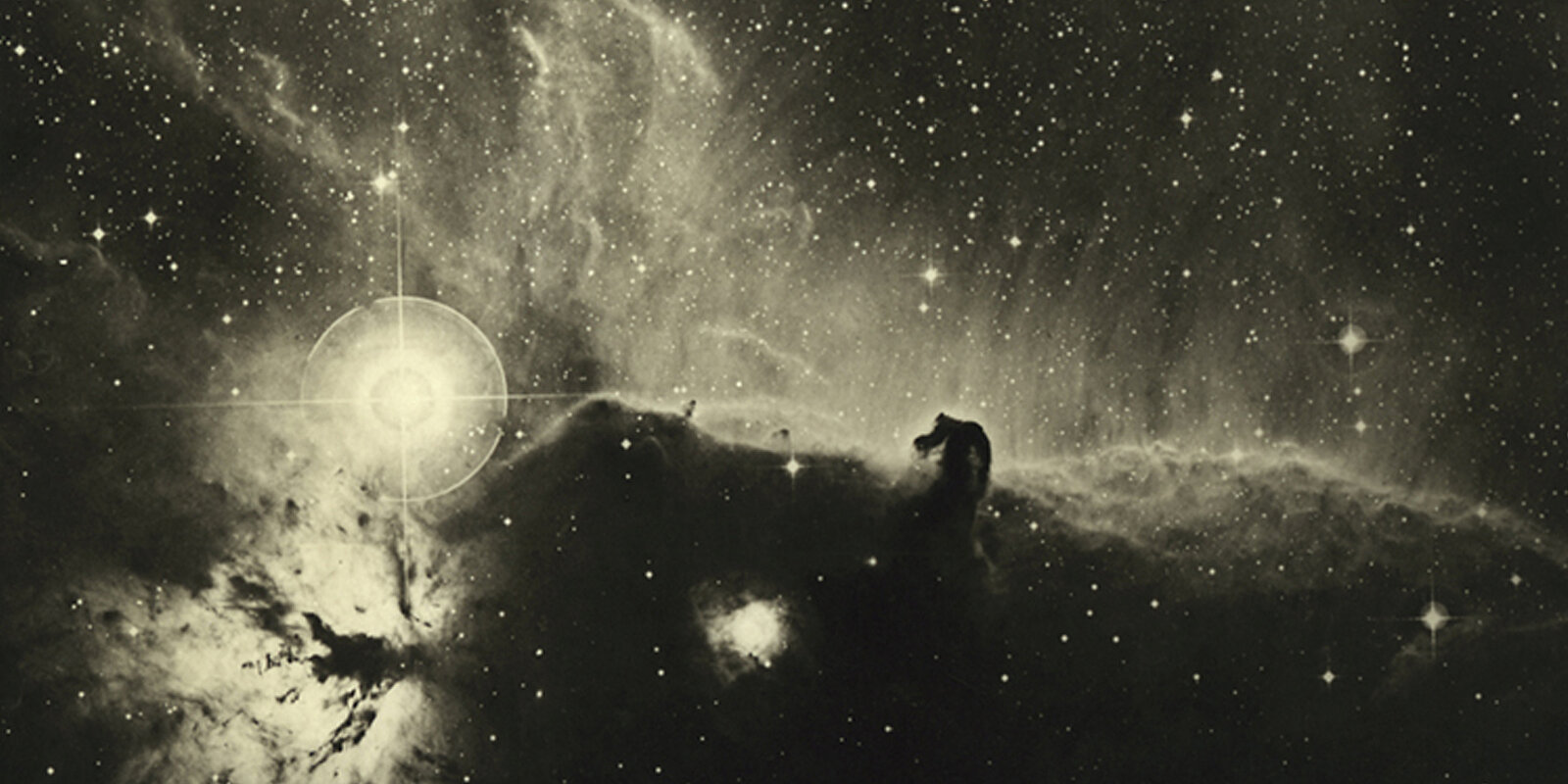
David Malin’s images of galaxies, nebulae, stars and comets are extraordinary beautiful. The outstanding quality of these photographs is further heightened by the platinum/palladium printing process: it lends the image an element of the unexpected, combining visual fidelity with artistic depiction. Born in England in 1941, David Malin studied chemistry before discovering his love of photography. He worked as a scientific photographer from 1975 to 2001 at the Anglo-Australian Observatory in New South Wales where he turned our perception of the edges of the universe upside down. As a specialist in electronic microscopy and the exploration of the infinitely small, he then became involved in astrophotography and for 26 years held the post of astronomer at the Observatory, which is equipped with one of the largest telescopes of the world.
He has developed innovative techniques, making it possible to produce images of extremely remote celestial objects, as well as some that are too faint to be seen by the naked eye. In his Sydney laboratory, these methods helped him to discover two new types of galaxies, the vaster of which bears the name "Malin I". By using "photographic amplification", a process permitting the duplication of the sheet of glass forming the negative by exposure to a diffuse light source, faint details appear which could not be recreated by a normal exposure, and subtle features and details become visible in the lighter areas of the image, without the print being over-exposed.
David Malin has long been praised and recognized for his work as photographer in scientific books and magazines, but has only recently found fame for his artistic talents, which have led to exhibitions of his work all over the world. His writings and discoveries have been awarded prizes by juries, both scientific and artistic, which have today earned him an excellent reputation, as much for his lectures as for his photographic works, which can be found in many international public and private collections.
Works
Exhibitions
Kunstsammlungen Jena, Germany
Galerie Karsten Greve, Cologne, Germany
Galerie Karsten Greve, Paris, France
Edwynn Houk Gallery, New York, USA
Commonwealth Institute, London, UK
Howard Schickler Fine Art Gallery, Broadway, New York, USA
Howard Schickler Fine Art Gallery, Broadway, New York, USA
Major int. solo exhibition at various locations, presented by the National Academy of Sciences, Washington, DC, USA; The British Council, Beijing, China; The British Council, Delhi, India; The British Council, Cape Town, South Africa; The British Council Sydney, Australia; The British Council, London, UK
James A. Michener Art Museum, Doylestown, PA, USA
Bates College Museum of Art, Lewiston, Maine, USA
Monash Gallery of Art, Wheelers Hill, USA
GoMA Gallery of Modern Art, Glasgow, UK
The Frances Young Tang Teaching Museum and Art Gallery at Skidmore College, Saratoga Springs, USA
ACP Australian Center for Photography, Sydney, Australien
Rochester Institute of Technology, Rochester, NY, USA
Art Tower Mito, Ibaraki, Mito, Japan
National Museum of Australia, Canberra, Australia
Konsthall, Lund, Sweden
Ville de Montpellier, France
Paine Webber Art Gallery, New York, USA
Headquarters of GEO Magazine, Hamburg
Musee des Beaux-Arts, Montreal, Canada; Centre de Cultura Contemporania, Barcelona, Spain; Palazzo Grassi, Venice, Italy